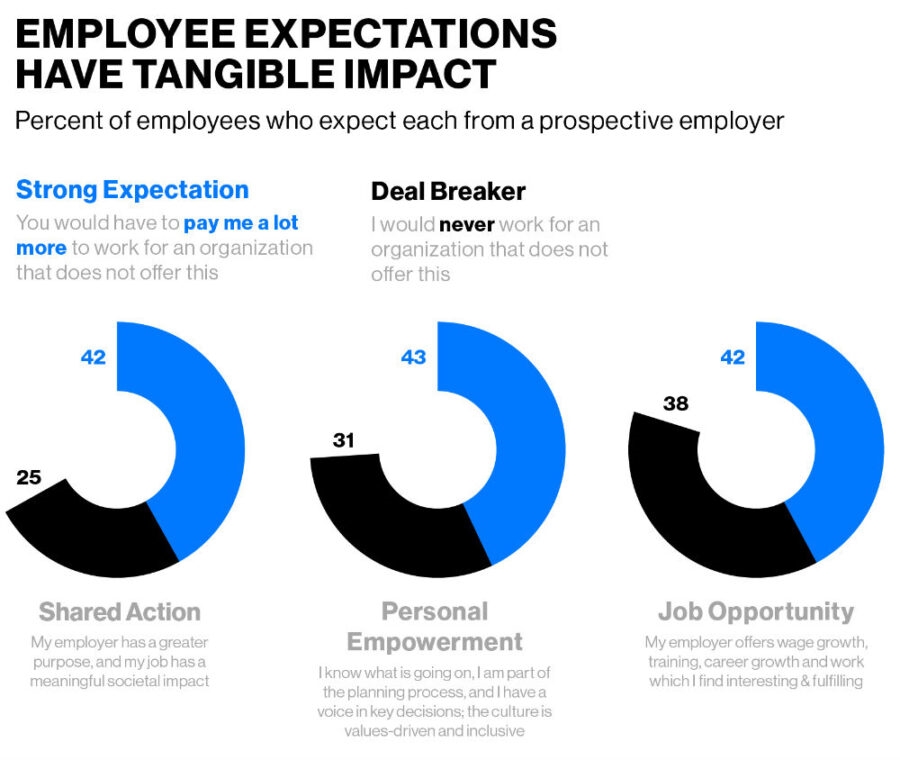Employee training programs are a serious issue today. The job market is strong, and with less talent out there competing for each position, job seekers can afford to be choosey. Companies are coming to realize that their employees are their biggest assets.
It’s worth investing in employee retention to make sure your employees have a long, productive tenure, and that calls for keeping a careful eye on your employee training programs to assess them in the right way.
It’s not enough to simply run a survey after employee onboarding or periodic training to ask how they rate the usefulness of what they learned today. There are many ways that your employee training and development programs impact your company as a whole, and if you overlook them, you could be leaving significant gaps in your employee education strategy.
These are some of the issues that you need to consider in order to measure the true effectiveness of your company’s employee training programs.
Keep an Eye on Your Churn Rates
Your business’s employee churn rates can serve as a real reflection of your employee training programs. Today’s employees want to feel that their company is investing in their development, otherwise they’ll leave. For the first time, workers have ranked career growth opportunities above salary or health and retirement benefits, with 61% saying that this is their most important factor.
Millennials in particular are looking for employers that care about their personal growth and career development. The recent Edelman Trust Barometer found that 42% of workers say they’d require a significantly higher salary to work at a company that doesn’t provide effective training and growth opportunities, and 38% said it would be a deal-breaker for them.

Image source: https://www.edelman.com/research/trust-and-new-employee-employer-contract
In short, your training programs affect talent acquisition and retention, so if your employee retention rates are taking a dive, that might reflect a general sense that your training program could use some improvement.
Productivity Is More Nuanced Than You May Realize
It’s probably no surprise to hear that productivity rates are another indicator of the success, or failure, of your employee training programs. Employees who are clear about their areas of responsibility, have mastered the skill sets relevant to their work, and know how to do their work correctly, are more productive.
They feel confident that they can deliver on their work requirements, and that confidence itself translates into improved productivity.
When your employee training programs are effective, employees also collaborate better with colleagues and employees within and outside their own teams. If your company’s output is dropping, it could be a sign that your employees are feeling overwhelmed, aren’t sure where to begin, or aren’t clear about their areas of responsibility within a project or department.
Productivity also suffers when your employees are constantly interrupted by digital tools, or don’t know the best way to use the software you provide. In a world of digital transformation, digital adoption is key. This is when your employees use all the tools at their disposal to their fullest extent. Insufficient or inadequate training programs undermine digital adoption, and if digital adoption is poor, your employees will waste time on inefficient manual and outdated digital processes, or failing to use business apps in a streamlined way.

Image source: https://www.workfront.com/campaigns/state-of-work
One study found that the average employee is interrupted by digital tools 13.9 times a day. Even workers who said they are engaged and aligned with company culture reported that they spend at least 30 minutes a day switching between apps. A Slack report concluded that the solution is to “Consciously set guidelines around which technology tools to use and how to use them.”
Educate to Maximize Employee Engagement
Employee engagement is another issue that’s heavily impacted by your training programs. People who understand the impact that their work has on the business and feel that they share the business vision are more engaged overall. Gallup research showed that employees who are engaged are more productive, loyal, motivated, and raise brand reputation externally.
Slack uses the term “aligned” to refer to workers who feel a connection with their company’s vision and strategy, which encourages them to work with more purpose. Its State of Work report found that 75% of aligned workers feel empowered to make decisions.

Image source: https://slack.com/intl/en-il/state-of-work
In contrast, disengaged workers are 12 times more likely to rate employee satisfaction as “very poor.” These are workers who haven’t grasped the company vision, don’t see how their work connects with the bigger picture, and have never been educated about company values or business strategy.
According to Saadia Zahidi, Managing Director of the World Economic Forum’s Centre for the New Economy and Society, companies can increase employee engagement by investing in the development of their soft skills and general personal growth – while also supporting career growth in uncertain times through “reskilling” initiatives.
“We need to break out of the current paralysis and recognize that skills are the ‘great redistributor,’” Zahidi has said. “Equipping people with the skills they need to make job transitions is the fuel needed for growth – and to secure stable livelihoods for people in the midst of technological change.”
If your employees are lackluster, report low levels of employee engagement, and don’t seem enthusiastic about your company, it might not be because you don’t have a foosball table. It’s far more likely to arise because your training programs aren’t succeeding in conveying the purpose of their work and the goals of your business.
Effective Training Underpins Your Entire Business
It’s clear that measuring the success of your employee training programs involves taking a much more high-level look at the attitudes and focus of your employees than you might have expected.
No matter what specific tools and metrics you use to measure them, churn, productivity and employee engagement are deep reflections of the state of your employee training programs, underlining the importance of reinvestment in what’s truly working.
Business & Finance Articles on Business 2 Community
(23)







